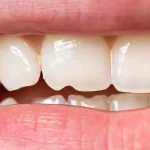Understanding Testosterone Replacement Therapy
What is Testosterone Replacement Therapy?
Testosterone Replacement Therapy (TRT) is a medical treatment designed to restore testosterone levels in individuals with low testosterone. This therapy can be administered through various methods, including injections, gels, creams, and oral medications. Approach testosterone therapy with caution if you are at high risk for prostate issues or other health concerns.
Why is TRT Needed?
TRT is often necessary for individuals experiencing symptoms of low testosterone, which can significantly impact their quality of life. Many men with low testosterone report improved energy levels, sex drive, and mood after testosterone treatment. If testosterone is low, why not replace it? However, it is essential to be mindful of the still possible risks of testosterone replacement therapy.
Common Symptoms of Low Testosterone
Common symptoms of low testosterone include:
- Fatigue and decreased energy levels
- Reduced sex drive
- Mood swings and irritability
- Loss of muscle mass and strength
- Increased body fat
- Difficulty concentrating and memory issues
Recognizing these symptoms early can help in seeking timely medical advice and appropriate treatment options.
Injection-Based TRT Methods
Intramuscular injections are one of the most common methods for administering testosterone replacement therapy (TRT). These injections are typically administered into the muscle, often the gluteal or thigh muscles. It may be injected by an HCP, or you may be able to inject it yourself at home. Injectable testosterone medications include: Depo-Testosterone (testosterone cypionate) and Testosterone Enanthate.
Subcutaneous injections involve administering testosterone into the fatty tissue just beneath the skin. This method is less invasive than intramuscular injections and can be more comfortable for some patients. Subcutaneous injections are usually administered in the abdominal area or thigh.
Injection-based TRT methods have their own set of advantages and disadvantages:
Pros:
- Effective: Provides a steady release of testosterone.
- Flexible: Can be administered at home.
- Cost-Effective: Often less expensive than other methods.
Cons:
- Invasive: Requires needles and injections.
- Pain: Some patients may experience discomfort.
- Fluctuations: May cause peaks and troughs in testosterone levels.
Transdermal Gels and Creams
Transdermal gels and creams are a popular method for administering testosterone replacement therapy (TRT). These topical applications are designed to deliver testosterone through the skin, directly into the bloodstream. This method is particularly beneficial for those who prefer to avoid injections or oral medications.
How Transdermal Gels Work
Transdermal gels work by allowing testosterone to be absorbed through the skin. The gel is applied to clean, dry skin, usually on the shoulders, upper arms, or abdomen. Once applied, the testosterone is gradually absorbed into the bloodstream, helping to maintain stable hormone levels.
Application Techniques
Proper application of transdermal gels is crucial for effectiveness. Here are the steps to follow:
- Wash and dry the application area thoroughly.
- Apply the prescribed amount of gel evenly over the skin.
- Allow the gel to dry completely before dressing.
- Wash hands thoroughly after application to avoid unintentional transfer.
Benefits and Drawbacks
Transdermal gels offer several benefits, including ease of use and the ability to maintain steady testosterone levels. However, there are also some drawbacks to consider:
- Ease of use: Simple and non-invasive application.
- Steady hormone levels: Helps maintain consistent testosterone levels.
- Skin irritation: Some users may experience irritation at the application site.
- Transfer risk: There is a potential risk of transferring the gel to others through skin contact.
Overall, transdermal gels and creams provide a convenient and effective option for those undergoing testosterone replacement therapy, especially for individuals with hypogonadism.
Oral TRT Options
Types of Oral Medications
Oral testosterone replacement therapy (TRT) involves the use of testosterone (oral route) medications to treat low testosterone levels. These medications are designed to be taken by mouth and are available in various forms, including tablets and capsules. Some common brand names include Andriol and Testred.
Absorption and Effectiveness
The absorption of oral testosterone can vary significantly among individuals. Factors such as gastrointestinal health and the presence of food can impact how well the medication is absorbed. Generally, oral testosterone is less effective compared to other delivery methods due to its first-pass metabolism in the liver, which can reduce the amount of active testosterone that enters the bloodstream.
Potential Side Effects
Like all medications, oral testosterone can have side effects. Common side effects include gastrointestinal issues, such as nausea and diarrhea. Additionally, there is a risk of liver toxicity with long-term use. Patients should be monitored regularly to ensure that the treatment is both safe and effective.
Innovative TRT Delivery Systems
Nasal Gels
Nasal gels are a newer form of testosterone replacement therapy (TRT) that offer a convenient and discreet method of administration. These gels are applied inside the nostrils, allowing for quick absorption into the bloodstream. This method can be particularly beneficial for those who prefer to avoid needles or daily applications of creams. Pre-filled doses of nasal gels can make the treatment process even more streamlined.
Buccal Tablets
Buccal tablets are another innovative TRT delivery system. These tablets are placed between the gum and cheek, where they dissolve and release testosterone directly into the bloodstream. This method bypasses the digestive system, which can help in maintaining more stable testosterone levels. Users often find this method to be both effective and easy to use.
Emerging Technologies
The field of TRT is continually evolving, with new technologies being developed to improve the efficacy and convenience of treatment. Some of the emerging technologies include:
- Automatic shipping of customized TRT doses to your doorstep, making the treatment process more convenient.
- Advanced formulations that enhance the absorption and effectiveness of testosterone.
- Wearable devices that monitor hormone levels in real-time and adjust dosages accordingly.
These innovations aim to make TRT more accessible and tailored to individual needs, ensuring that patients receive the most effective treatment possible.
Choosing the Right TRT Method
Selecting the appropriate Testosterone Replacement Therapy (TRT) method is crucial for achieving optimal results and maintaining overall health. Choosing TRT is not just about addressing the symptoms of low testosterone but also about finding a method that fits one’s lifestyle and medical needs.
Factors to Consider
When deciding on a TRT method, several factors should be taken into account:
- Effectiveness: Different methods have varying levels of effectiveness. For instance, injections tend to be most effective in maintaining stable testosterone levels.
- Convenience: Some methods require daily application, while others might be weekly or bi-weekly.
- Side Effects: Each method has its own potential side effects, which should be considered.
- Cost: The price of TRT can vary significantly depending on the method chosen.
Consulting with Healthcare Providers
It’s essential to consult with healthcare providers to determine the most suitable TRT method. They can provide insights based on medical history, current health status, and personal preferences. A comprehensive guide to TRT injections, for example, can help in understanding the nuances of different injection techniques.
Personalizing Your TRT Plan
Personalization is key to a successful TRT regimen. This involves:
- Regular Monitoring: Keeping track of testosterone levels through blood tests.
- Adjusting Dosages: Modifying the dosage based on how the body responds.
- Lifestyle Considerations: Ensuring the chosen method aligns with daily routines and lifestyle.
By considering these factors and working closely with healthcare providers, individuals can find the most effective and convenient TRT method for their needs.
Monitoring and Adjusting TRT
Regular Blood Tests
Ongoing monitoring of testosterone levels and patient symptomatology is critical. Regular blood tests and patient feedback are essential to ensure the treatment is effective and safe. These tests help in determining the optimal testosterone dosage and in making necessary adjustments.
Recognizing Side Effects
Patients and healthcare providers should be vigilant in recognizing side effects. Common side effects may include acne, sleep apnea, and changes in mood. Early detection of these symptoms can prevent more serious complications. It’s important to report any unusual symptoms to your healthcare provider immediately.
Adjusting Dosages
Adjusting dosages is a crucial part of TRT management. Based on the results of blood tests and patient feedback, healthcare providers may need to increase or decrease the dosage. This ensures that patients receive the most effective and safe level of testosterone replacement. Regular follow-ups and consultations are necessary to maintain the balance and effectiveness of the treatment.











